Sacred Blindness II: The Indigenous Eight
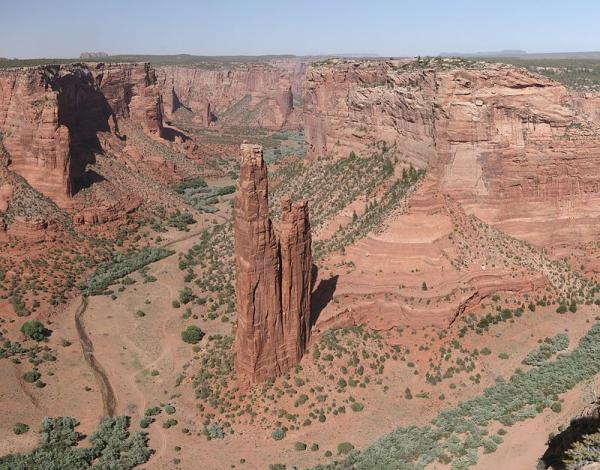
After my anger cooled from reading about the “Top Eight Religious Destinations in the World,” I got to thinking of the places I have seen in my own country that I am willing to claim in public are “religious destinations” worthy of traveling to see.
The futility of naming just eight is obvious, but in naming eight I hope to show that it made no sense to ignore half of the world in making the original list. In no particular order, here are my nominations from the United States:
Pahá Sápa, also known as The Black Hills, located in South Dakota and Wyoming, but the Great Sioux Nation disputes the land title. Actually, the Great Sioux Nation won the dispute in court but was offered only money in exchange. Since the hills are sacred, they are not for sale. A visit will show you why.
The Pahá Sápa contain, on the Wyoming side, a feature the Lakota call Matȟó Thípila, the Arapaho call Wox Niiinon, the Crow call Daxpitcheeaasáao, and non-Natives call Devil’s Tower. Native people still conduct ceremonies on the mountain and climbers are requested not to scale it in June, when most of the ceremonies are held.

Some non-Natives desecrate the place during ceremonies just to prove they can. Others don’t come to climb at all, but just to see the formation immortalized in a plate of mashed potatoes in Close Encounters of the Third Kind.
Canyon de Chelly, in the Navajo Nation but also in Arizona, contains several sacred sites, some known to the general public and some not. A particularly interesting rocky spire is reputed to be the place where Spider Woman brought the skill of weaving to the Navajo people. Tourists are not allowed in Canyon de Chelly without a Navajo guide, both because of the sacred sites and because people sill live there who don’t want tourists peering in their windows. It’s safer if you have a four-wheel drive vehicle or you hire a guide who does. The paved road around the canyon rim is also worth a drive.
Enchanted Rock was within my lifetime designated a Texas State Natural Area, but traditional Comanche people still consider it sacred, a place to seek visions on the largest pink granite batholith in North America. Stone Mountain, in the Cherokee homelands now called Georgia, is a larger batholith of a different color and once a sacred site of the Ku Klux Klan.
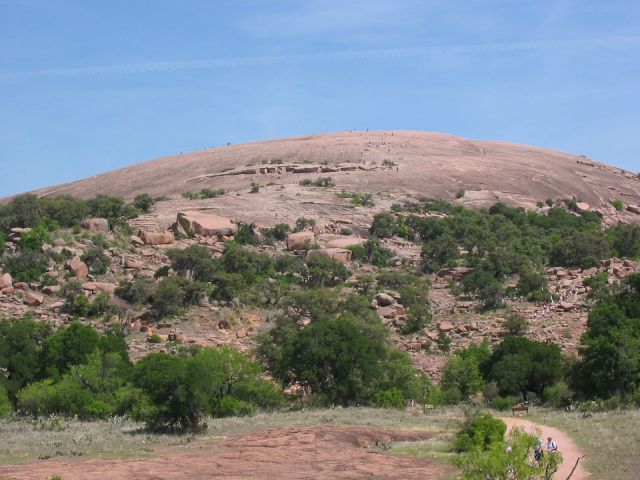
There is a historical marker on top of Enchanted Rock that has shortened a story that used to be more overtly cock-and-bull. It told of Texas Ranger Jack Hays escaping from a Comanche war party when he retreated to the summit. They used to claim the spirits of the Rock scared off the superstitious savages.
When I related that story to a Comanche medicine man, he chuckled and asked me whether white people customarily fought in church?
The Zuni Salt Lake has been central to spiritual practices of pueblo peoples for some 1500 years. Salt is of course necessary to human health and it’s no surprise that a place where salt can be gathered would become a ceremonial center. It is mentioned here as an important religious destination not because this little salt lake in what is now New Mexico is more impressive than the Great Salt Lake taken over by the Mormons, but because of the radiating trails to Zuni, Laguna, and Acoma Pueblos.
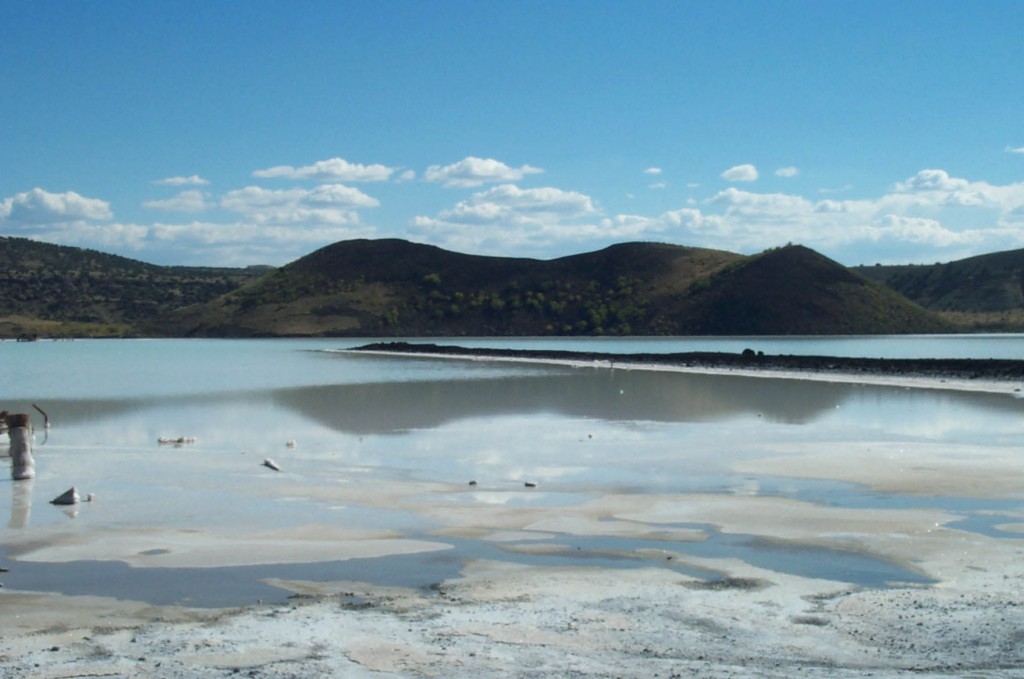
They call the lake Zuni because the Zuni people have taken the lead in protecting a fragile ecosystem from mining operations. For a tourist, the lake becomes a gateway to the cultural richness of the pueblos along the Rio Grande. You can come away able to recognize distinct differences between Acoma and Santa Clara pots, and you might discover what sheep manure can do to a glaze. Zuni inlay jewelry is legendary around the world. All the pueblos are home to outstanding artists.
Pyramid Lake is a storied fishing spot in the Nevada desert where the Truckee River, originally fed by snow melt cascading out of the Sierras as overflow from Lake Tahoe, just disappears. It contains the rock formation that gives the lake its name and other formations as well sacred to the Paiute band on whose reservation the lake is central. Tourists are not allowed in the ceremonial areas, but there is plenty to see otherwise.
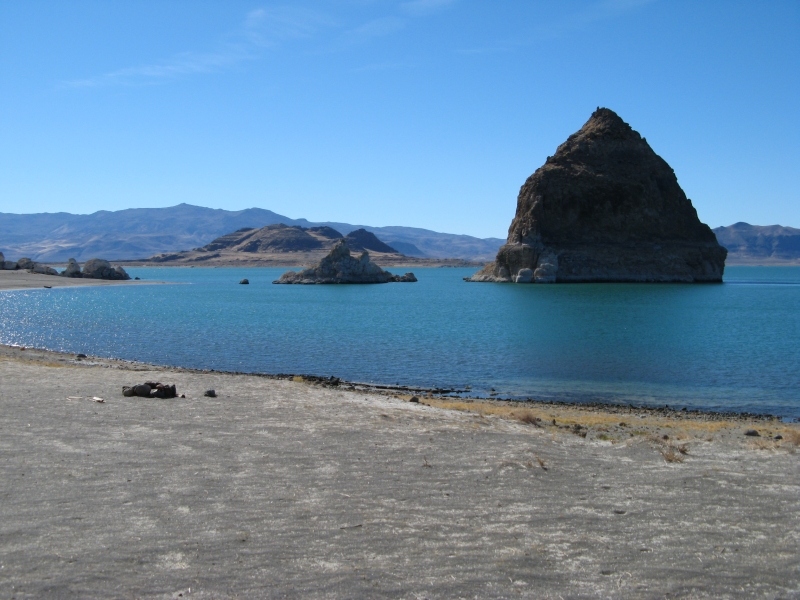
Fajada Butte is a historically sacred site that the National Park Service will not let you climb without a permit supported by very good reasons. The fragile area on the butte contains the Sun Dagger, petroglyphs and boulders arranged to mark the summer and winter solstices and, most amazingly, the lunar standstill that cycles between 18 and 19 years.
Why visit a tall rock infested with rattlesnakes and closed to the public anyway? Because it’s smack dab in the middle of Chaco Canyon, containing the Chaco Culture National Historical Park, a UNESCO World Heritage Site. You can walk though Pueblo Bonito, 650 rooms and four stories high. Contrary to the colonial fantasy about pre-Columbian America, you have evidence of a substantial civilization founded on agricultural surplus that traded with similar civilizations in California to the west (abalone shells), Mexico to the south (parrot feathers), and Cherokee country to the east (copper ornaments).
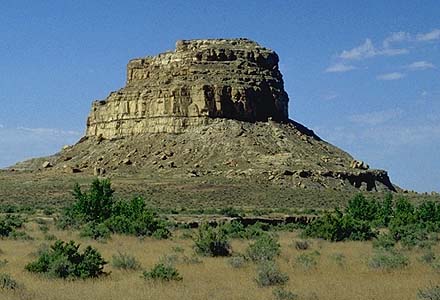
There are roads built straight as a compass line from Chaco to outlying settlements with stairs cut into the canyon walls. The roads themselves were only discovered with aerial photography. They are hard to see from the ground except at the top of the steps. What was not discovered was why a people with no wheels or beasts of burden bigger than dogs would need roads?
The San Francisco Peaks are snow-capped mountains visible from much of northern Arizona. They are sacred to the Hopi people, who believe they are the home of the katsinam, the benevolent cloud-beings who keep the water cycle alive in the high desert.

One of the peaks is Doko’oosliid, the sacred mountain of the west, one of four mountains representing the cardinal directions and the borders of Dinétah, the place within which the Diné (Navajo) people were created to live.
The San Francisco Peaks are beautiful and worth traveling to see, but some Indians now call them—with bitter, ironic humor—Peaks of the Yellow Snow. This refers to the failure of litigation and persuasion to stop resort operators from making artificial snow for the ski slopes with treated sewage.
Bighorn Medicine Wheel is sacred to the Arapaho and Crow and Cheyenne, among others, and is considered by the U.S. to be on National Forest land within the state of Wyoming. The several tribes that conduct ceremonies there would dispute that the sacred ground could be “owned” by this or that faction of human beings, but many of the sacred sites of North America are subject to similar title disputes.
It’s fairly certain that the eight places described above are idiosyncratic to me. I have written in the first person to emphasize my limitations. Obviously, my list is confined to the United States, which suggests there are no sacred sites worth visiting in Canada, Mexico, or any part of South America.
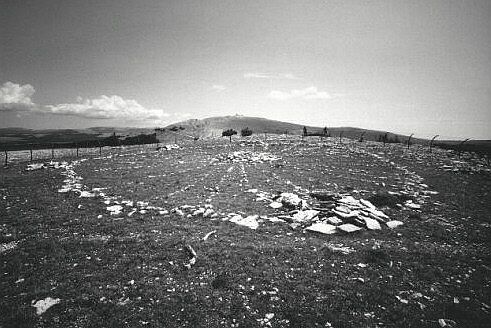
By calling attention to my own ignorance in this way, I hope to demonstrate what really burned me about the “Top Eight Religious Destinations in the World” the sheer arrogance of trying to judge the sacred.
RELATED: Sacred Blindness I: Only Half the World is Sacred?
© 1998 - 2014 Indian Country Today. All Rights Reserved To subscribe or visit go to: http://www.indiancountry.comRead more at http://indiancountrytodaymedianetwork.com/2014/12/30/sacred-blindness-ii-indigenous-eight-158465